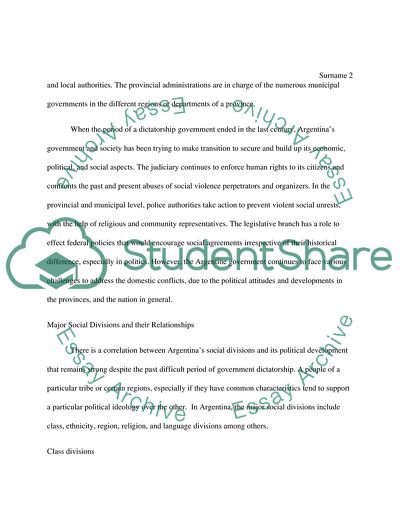Cite this document
(Argentinas Government Structure and Domestic Society Report Example | Topics and Well Written Essays - 2000 words - 1, n.d.)
Argentinas Government Structure and Domestic Society Report Example | Topics and Well Written Essays - 2000 words - 1. https://studentshare.org/history/1803888-argentinas-governance-structures-and-domestic-society
Argentinas Government Structure and Domestic Society Report Example | Topics and Well Written Essays - 2000 words - 1. https://studentshare.org/history/1803888-argentinas-governance-structures-and-domestic-society
(Argentinas Government Structure and Domestic Society Report Example | Topics and Well Written Essays - 2000 Words - 1)
Argentinas Government Structure and Domestic Society Report Example | Topics and Well Written Essays - 2000 Words - 1. https://studentshare.org/history/1803888-argentinas-governance-structures-and-domestic-society.
Argentinas Government Structure and Domestic Society Report Example | Topics and Well Written Essays - 2000 Words - 1. https://studentshare.org/history/1803888-argentinas-governance-structures-and-domestic-society.
“Argentinas Government Structure and Domestic Society Report Example | Topics and Well Written Essays - 2000 Words - 1”. https://studentshare.org/history/1803888-argentinas-governance-structures-and-domestic-society.


